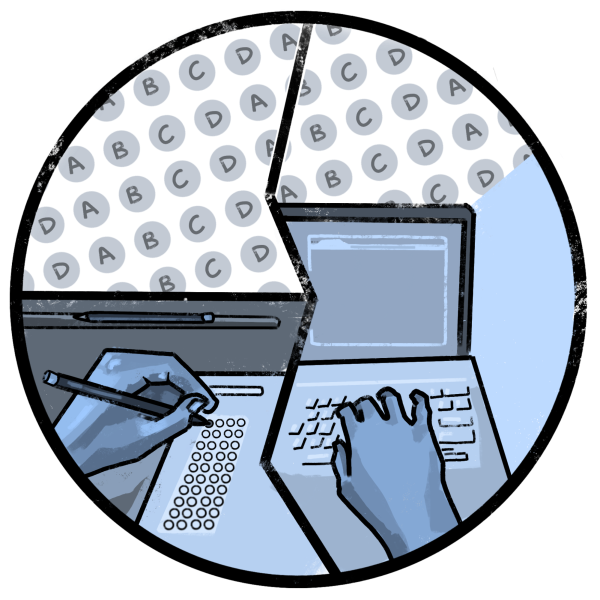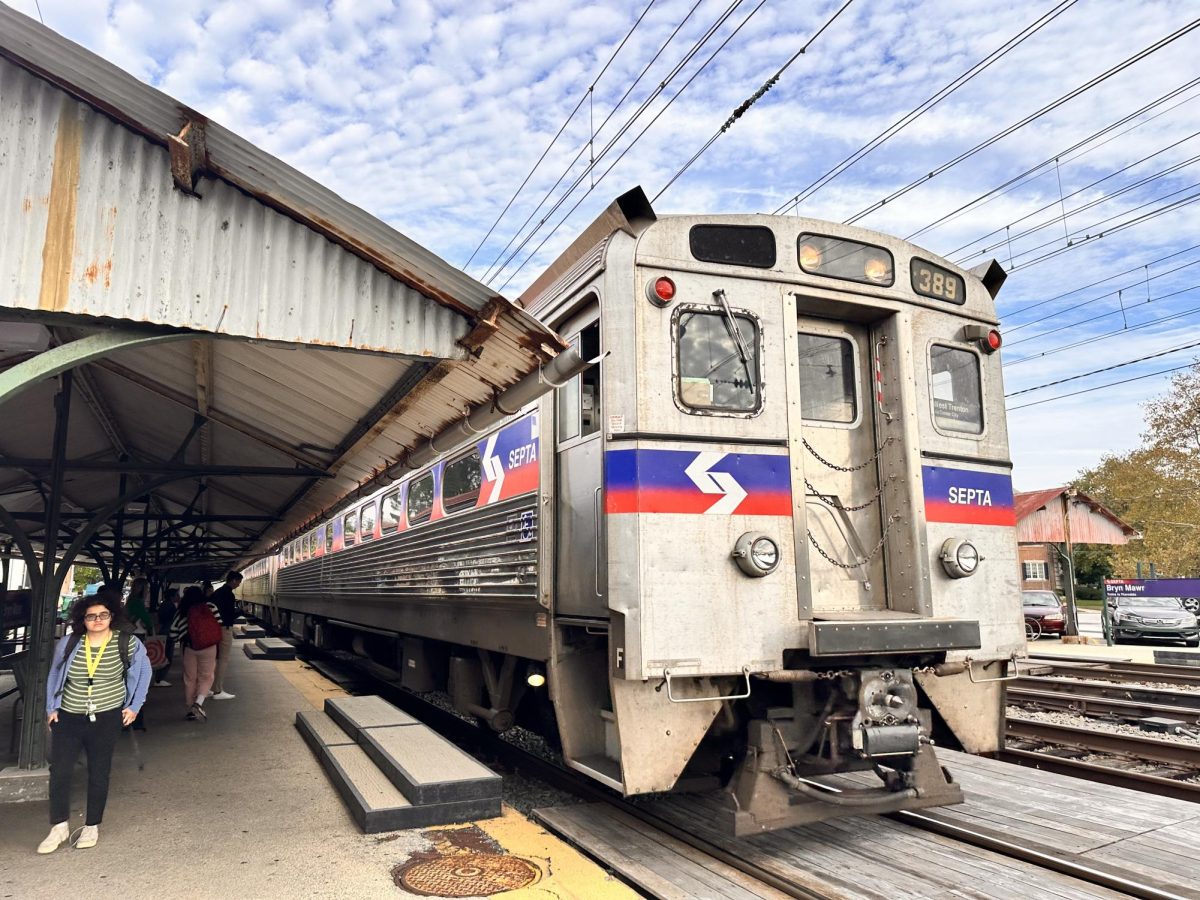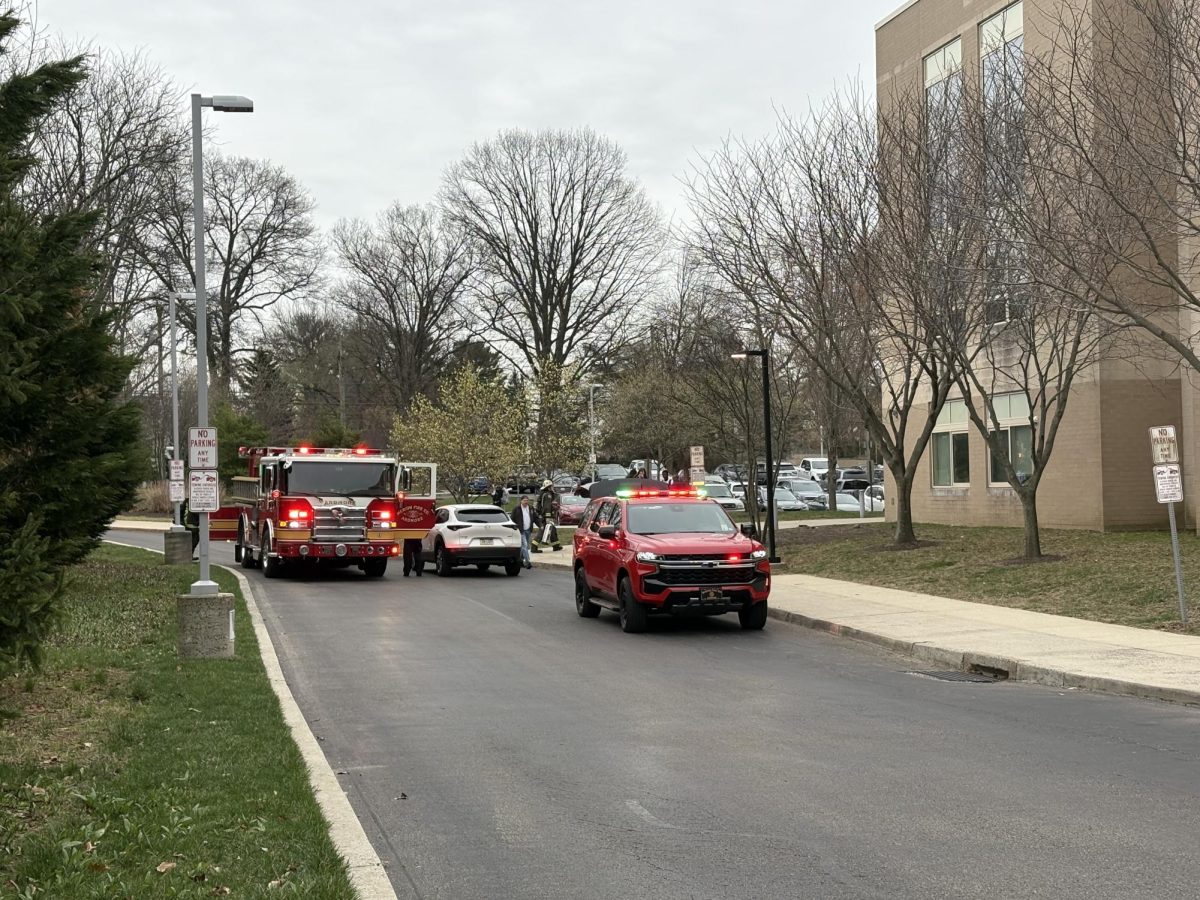
“The PSAT/NMSQT is now digital! The test is easier to take, shorter, has more time per question, and comes with a built-in calculator,” reads in bold at the top of the College Board PSAT section. On Wednesday, October 11, sophomores and juniors of LM entered their delegated rooms to take the PSAT. But something was different this year: the tests were no longer distributed as paper and pencil, but on their laptops. This was in an effort to make the PSATs “easy” to take. Instead, LM was thrown hurdle after hurdle.
On the first testing day, students and proctors sat in their rooms for about an hour before administration realized they would not be able to have students take the test.
While not entirely sure what went wrong, Mr. Thomas Swope commented that his “theory was that the school’s internet provider thought that it was being DDoSed, which is a type of cyber attack where someone floods a network with requests to the point where the network is overwhelmed and fails. To prevent these types of attacks, networks will deny high quantity requests that originate from similar IP addresses. Since we had hundreds of students all attempting to connect to the same site, and then receive a response, the network may have assumed that it was an attack and blocked these requests.”
The schedule was reverted to begin at 8:45 the following week. “It was bound to work on day two,” many people thought. But unfortunately, testing was delayed once more for at least an hour and 45 minutes. Although both students and proctors were not given instructions on what to do, everyone tried different methods in order for the testing to commence. Proctor and AP Psychology teacher Mrs. Rehak said, “We were just sitting there and waiting with our screens open, and we just kept trying to restart and refresh.” While the administration held high hopes that the test would work, other students did not.
When asked what they did while waiting for the PSAT to load, Mia Elkins ’26 said, “I went on my phone, scrolled around, played games. I had texted my mom, ‘We are not going to do it, there is no way.’”
Luckily, Swope reports that “the tech team did change a setting” and the test proceeded at 9:15 instead of the scheduled time of 7:30. What was meant to be a two-and-a-half-hour delay for Seniors and Sophomores became a 4-hour delay. They did not arrive until 1:30 p.m.
Some people saw this as a “glass-half-full” sort of situation, such as Mr. Reed who said “I found it just to be kind of funny. But I think in situations like this, you roll with it. These days you remember. Ten years down the road, I will still remember this day and I will joke around with people about the PSATs in 2023”. However, not everyone was as optimistic as he was.
Some viewed this as a “glass-half-empty” event instead. Not only was instruction time suffered, but some students like Zach Levin ’26 said that sitting and waiting around for the test to begin brought him out of the “testing mode,” because he “woke up intending to take the test immediately, and when [he] could not do that, [he] was thrown [off].”
As more standardized tests become computerized, technical difficulties are bound to happen. Due to the computerization of the PSAT, LM teachers and students have begun to learn to adapt to these consequences.






